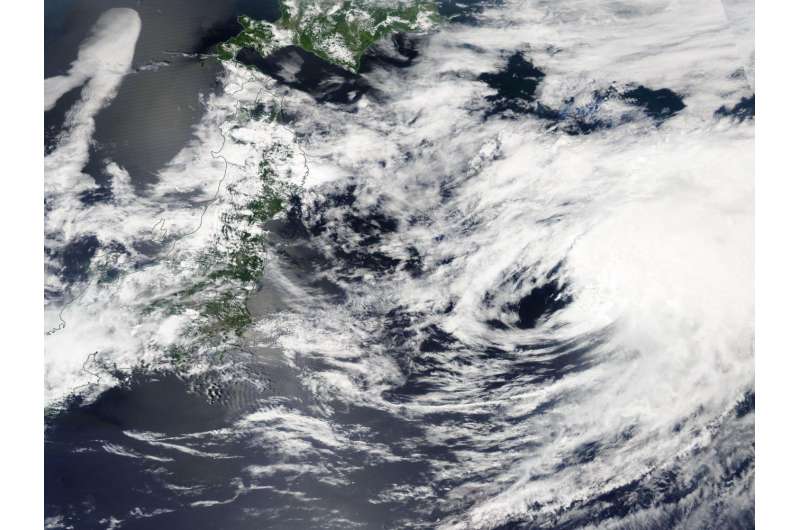NASA's Aqua Satellite sees Extra-Tropical Cyclone Nanmadol's remnants east of Japan

NASA's Aqua satellite passed over the Northwestern Pacific Ocean early on July 5 and captured an image of the remnants of Tropical Depression Nanmadol.
On July 5 at 1:30 a.m. EDT (05:35 UTC) the Moderate Resolution Imaging Spectroradiometer or MODIS instrument that flies aboard NASA's Aqua satellite captured a visible image of Tropical Depression Nanmadol far to the east of Japan. The image showed an open circulation with the bulk of clouds and thunderstorms pushed east of the center as a result of vertical wind shear. Nanmadol had already transitioned into an extra-tropical storm.
The Joint Typhoon Warning Center or JTWC issued their final advisory on Nanmadol on July 4 at 2100 UTC (5 p.m. EDT). At that time the tropical storm had weakened to a depression. Nanmadol's maximum sustained winds were near 30 knots (34 mph/55 kph). The depression was moving to the east at 31 knots (35 mph/67 kph). At that time, Nanmadol was located near 34.8 degrees north latitude and 142.4 degrees east longitude, about 136 nautical miles east-southeast of Yokosuka, Japan.
The JWTC said that convection had significantly sheared (pushed away from the center from outside winds) from the low level circulation that has become embedded in the cold baroclinic wind field. Remnants of Tropical Depression Nanmadol has lost tropical characteristics and has fully transitioned into a cold core system.
Provided by NASA's Goddard Space Flight Center





















